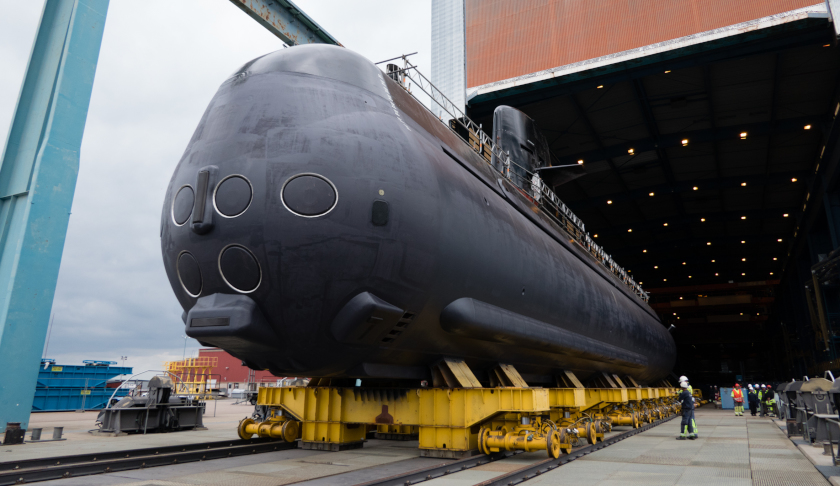The Swedish submarine HSwMS Gotland started sea trials at the Saab shipyard in Karlskrona, following a comprehensive mid-life upgrade (MLU) to ensure operational capability beyond 2025.
To continue reading the rest of this article, please log in.
Create free account to get unlimited news articles and more!
HSwMS Gotland is the first of two submarines being upgraded with the mid-life modifications, which consist of upgrades of onboard systems and technology, sustaining the submarine’s operational capability to meet future naval challenges.
Gunnar Wieslander, senior vice president, head of business area Kockums at Saab, said, "The sea trials mark an important phase in the MLU project. This is the first time the crew will be able to operate the new systems in the true environment. After extensive training in the land based training facility, they will now be able to see the true potential of their submarine."
The process includes upgrades for many important systems, such as upgrading the Stirling air-independent propulsion (AIP) for longer duration underwater and the combat system. This also saw significant structural modifications with an expansion of the existing hull structure by two metres, adding enhanced cooling systems to increase the operating area profile, from both arctic to the tropics.
AIP systems allow conventional submarines to recharge their batteries without surfacing for air. This enables the submarine to remain underwater for extended periods of time, limiting their surface exposure and vulnerability to detection.
There are three main variants of AIP found in diesel-electric submarines, these include:
- Closed cycle steam turbines: Used largely on French-build submarines, close cycle steam turbines mimic the energy production process found on nuclear submarines (where a nuclear reactor provides heat that turns water into steam) by mixing oxygen and ethanol. This system, dubbed MESMA by the French is complex, generates vast quantities of power, but suffers from efficiency issues compared with other alternatives.
- Stirling cycle: Uses diesel to heat a fluid permanently contained in the engine, which in turn drives a piston and generates electricity. The exhaust is then released into the seawater. The Stirling system is slightly more efficient, and somewhat less complicated than its French counterpart, and is used on Japanese, Swedish and Chinese submarines.
- Fuel cell: Is currently considered state-of-the art in AIP technology. A fuel cell uses hydrogen and oxygen to generate electricity, with minimal moving parts. Fuel cell AIP systems generate large amounts of energy with minimal waste production and acoustic performance. German-built submarines are world leaders in this space, with the French, Russians and Indians moving toward introducing the capability.
Even the traditional optical periscope is replaced with a new optronic mast for enhanced surveillance. Additionally, the upgrade also saw improvements to sensors and improved crew quarters to ensure improved crew readiness and comfort.
More than 20 systems on-board the upgraded Gotland Class will be implemented in the new A26 submarine for Sweden. The Gotland Class MLU therefore contributes to the test and qualification of some of the innovative solutions to be implemented in the future Swedish A26 submarines. Following the completion of these tests and verifications, the submarine will be delivered back to the Swedish Navy.
"The relaunch of Gotland is an important milestone in the evolutionary development of Swedish submarines. After a comprehensive upgrade, integrating the latest generation of important systems such as the Stirling engine, modern sensors and new management functions, Gotland is almost a new submarine, ready to take on missions around the world," Wieslander said.
Australia's Collins Class submarines are based upon enlarged Vastergotland Class submarines, designed by Kockums, which served as the basis for the Gotland Class submarines. The Swedish Navy currently operates both classes of submarines following a series of mid-life upgrades aimed at improving the capability of the platforms.
The MLU program for the Gotland Class highlights that modernisation and upgrade programs can extend the operational life and deterrence capability of platforms like the Collins Class.

 Login
Login







